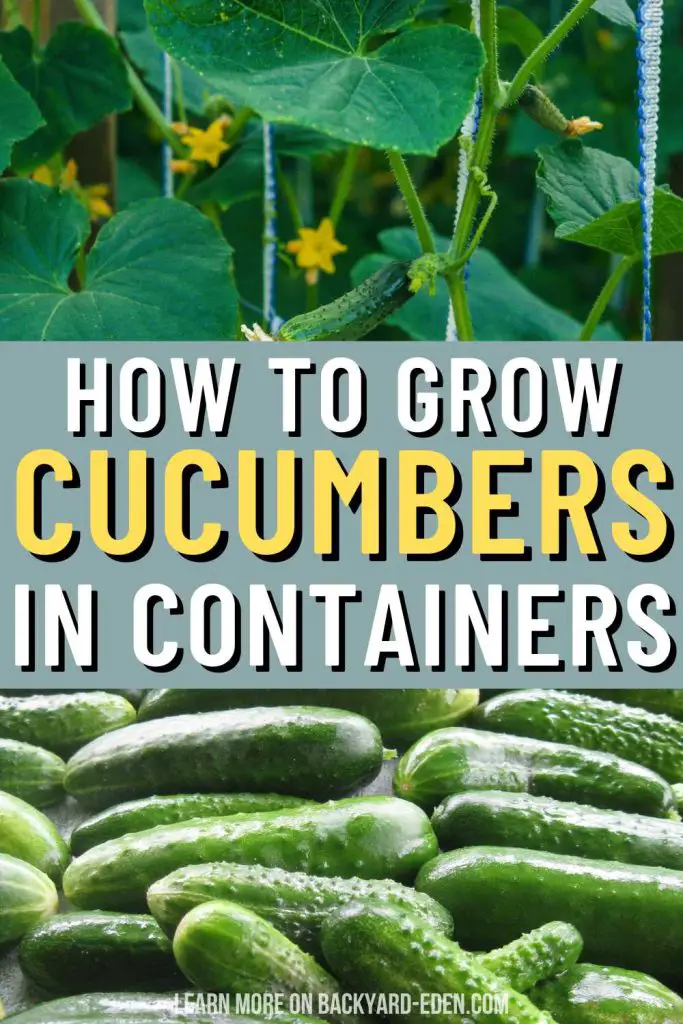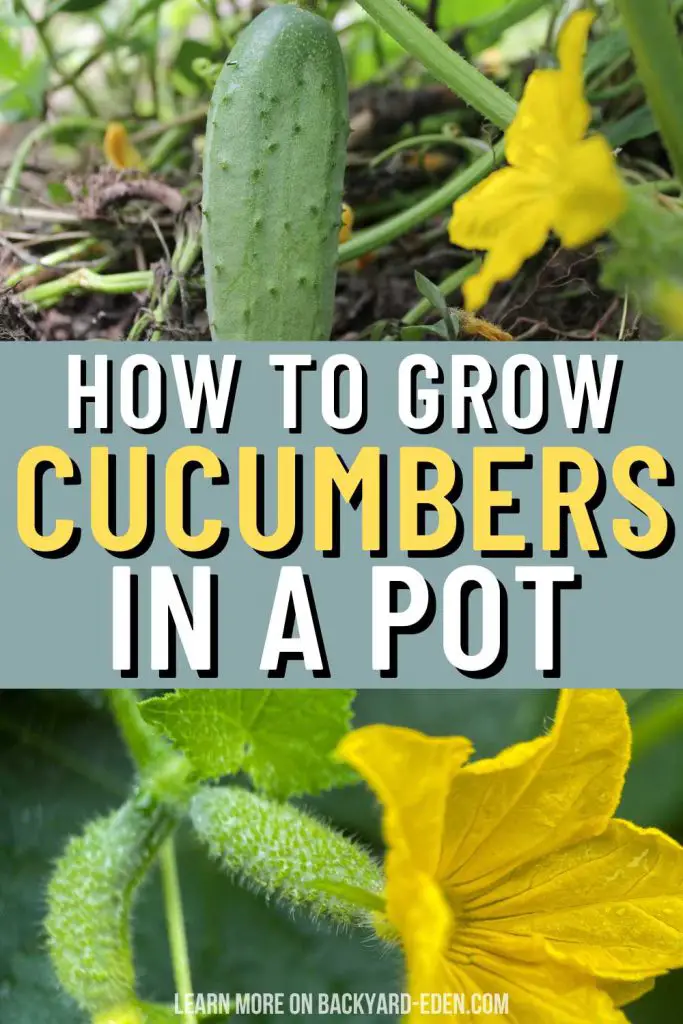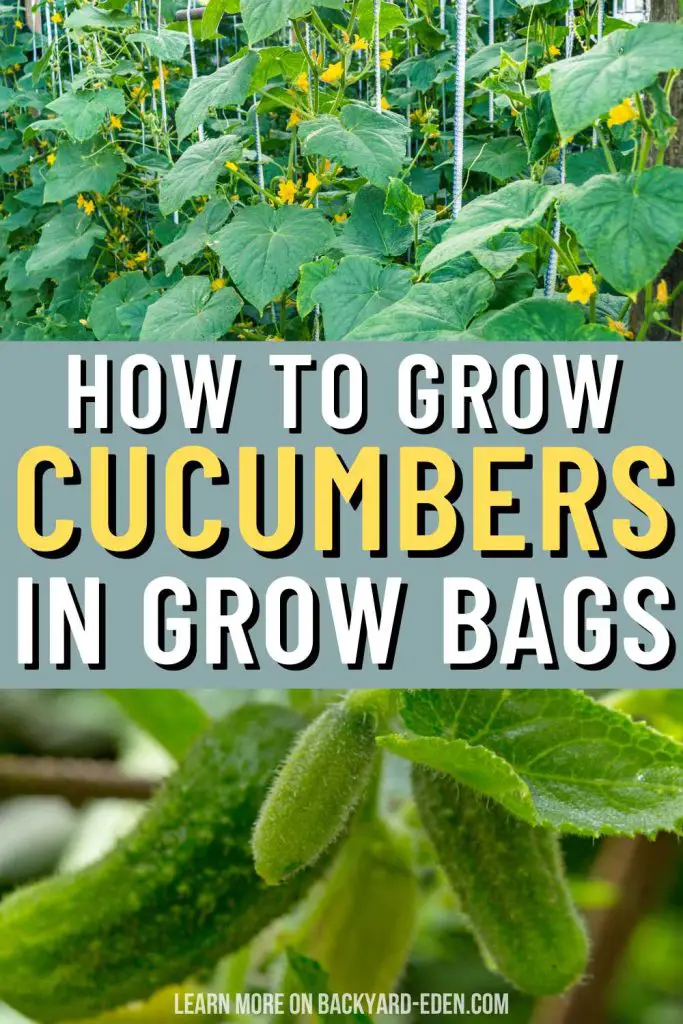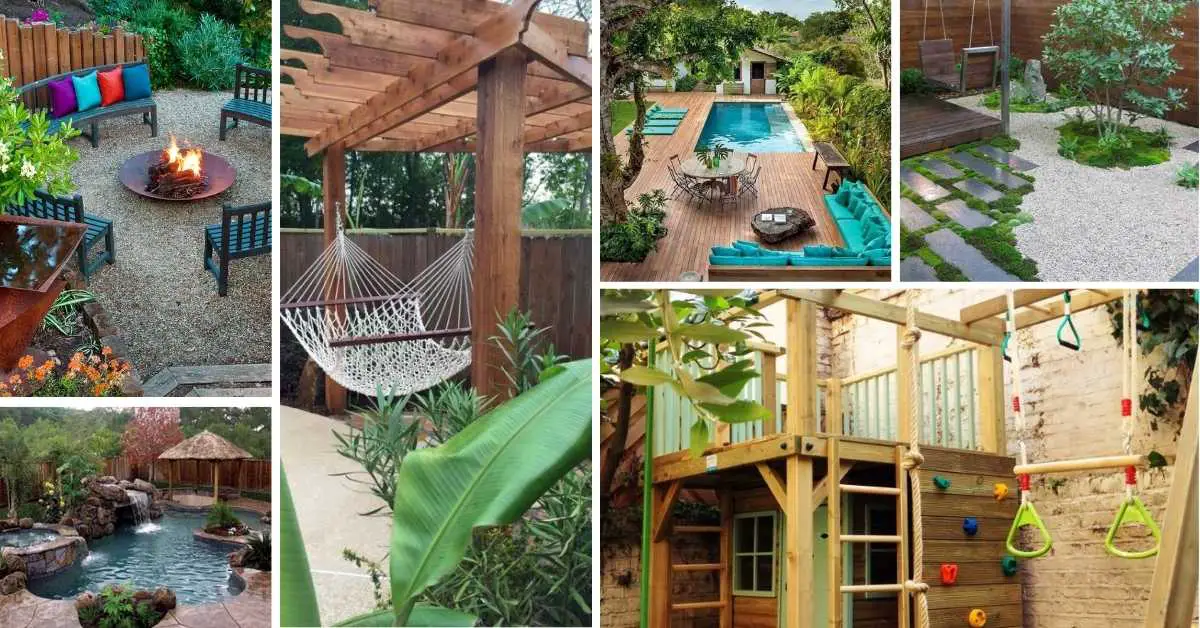Hey there, garden enthusiasts! Ever dreamed of picking fresh cucumbers right from your balcony or patio? You’re in the right place.
Growing cucumbers in containers is not only fun but also perfectly doable, regardless of the space you have.
We’ll cover everything you need to know to get started, answer common questions, and share some tips to ensure your cucumbers thrive. So, let’s embark on this green journey together!
Why Grow Cucumbers in Containers?
Benefits of container gardening for cucumbers include flexibility and solving soil issues. If your garden soil isn’t ideal, containers are your best friend. Plus, moving pots to catch the sun is a breeze. Growing cucumbers in containers can be a solution for limited space.
Whether you have a small yard or just a balcony, you can still enjoy fresh cucumbers. There’s also something special about having fresh veggies within arm’s reach—it’s incredibly satisfying!
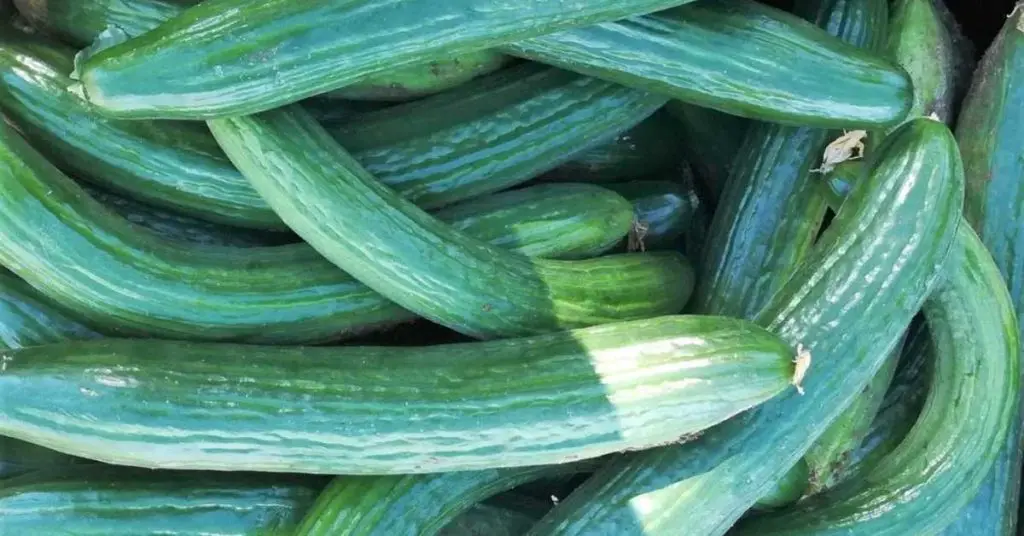
This post may contain affiliate links. Read our full disclosure here.
How To Choose the Right Container For Cucumbers
The size and type of container you choose is crucial. Cucumbers need room to grow, so opt for a container that’s at least 12 inches deep and wide. This gives roots enough space to spread out. Drainage is key to prevent water from pooling at the bottom.
Make sure your container has holes at the bottom. If it doesn’t, you can drill some yourself. When picking a container, aesthetics matter too. Choose one that looks good in your space. It can be fun to mix functionality with style!
What Is the Smallest Container You Can Grow Cucumbers In?
The smallest container for growing cucumbers should be at least 5 gallons in size and about 12 inches deep. This size provides sufficient space for the roots to grow and supports the overall health and productivity of the plant.
While cucumbers can be quite adaptable, reducing the container size below this can stress the plant, leading to fewer cucumbers and potential health issues. Always remember, more space for roots means a healthier, more productive cucumber plant.
What Is the Best Material for Your Container to Be Made out Of?
Containers for growing cucumbers can be made out of various materials, including plastic, clay, ceramic, and wood. Each material has its advantages.
Plastic containers are lightweight, inexpensive, and retain moisture well, but they can deteriorate in sunlight over time.
Clay and ceramic pots are heavier and more aesthetically pleasing but can dry out more quickly, requiring more frequent watering.
Wooden containers offer a natural look and good insulation from heat but can rot if not treated.
Ultimately, the best material for your cucumber container depends on your personal preference, budget, and gardening conditions. Ensuring adequate drainage is more important than the material itself.
Can You Use a Fabric Grow Bag?
Yes, you can use a fabric grow bag for growing cucumbers, and it’s actually a great option for several reasons. Fabric grow bags offer excellent drainage and prevent over-watering, which is crucial for healthy cucumber growth.
They also promote air pruning of the roots, which encourages the development of a healthier root system. Additionally, fabric bags are lightweight, making them easy to move, and they can be folded and stored away when not in use, saving space.
Just ensure the grow bag is large enough (at least 5 gallons) and provide support for vining cucumber varieties if needed.
Remember, the right container can make a significant difference in the success of your container gardening. With the correct size, material, and setup, you can look forward to a bountiful harvest of fresh cucumbers.
Selecting Your Cucumber Variety
There are two main types of cucumbers: bush and vine. Bush cucumbers are compact, making them ideal for containers. Vine cucumbers need more space and support to climb, but they can also work in containers if you provide a trellis.
Look for varieties like ‘Bush Champion’ or ‘Spacemaster’ for bush types. ‘Salad Bush’ and ‘Picklebush’ are also great picks. For vine types, ‘Sweet Success’ and ‘Marketmore’ are reliable. Choosing the right variety will make your container gardening journey smoother.
Planting Your Cucumbers
Start with high-quality potting mix. Garden soil is too heavy for containers. Plant seeds directly in your container or start with seedlings for a quicker harvest. If using seeds, plant them 1 inch deep. Space seedlings or plants about 6 to 8 inches apart.
This gives them room to grow without overcrowding. After planting, water the soil gently but thoroughly. The soil should be moist but not soggy.
Caring for Your Container Cucumbers
Watering your cucumbers is important. They love consistent moisture. Check the soil daily. If the top inch is dry, it’s time to water. Morning is the best time to water. This helps avoid diseases. Fertilizing helps cucumbers grow strong and produce lots of fruit.
Use a balanced liquid fertilizer every 2-4 weeks. Sunlight is crucial. Cucumbers need 6-8 hours of sunlight daily. Position your containers where they’ll get plenty of light.
Pest and Disease Management
Watch out for pests like aphids and cucumber beetles. Inspect your plants regularly. If you spot pests, you can often wash them off with water or use organic insecticidal soap. Diseases such as powdery mildew can be a problem.
Ensure good air circulation and avoid wetting the leaves to reduce risk. If a plant does get sick, remove and dispose of it to protect the others.
Harvesting Your Cucumbers
Your cucumbers are ready when they are firm and bright green. Don’t wait too long; overripe cucumbers can be bitter. Harvesting regularly encourages more fruit to grow. Use a knife or clippers to cut the cucumber off the plant. Be gentle to avoid damaging the plant.
Troubleshooting Common Issues
If your cucumber leaves are yellowing, it could be a sign of over-watering or poor nutrition. Make sure your container has good drainage and consider applying a balanced fertilizer.
Wilting plants might need more water, especially in hot weather. Always check the soil before watering.
Solving these issues early can keep your cucumbers happy and productive.
FAQS
Do Cucumbers Grow Well in Containers?
Yes, cucumbers grow very well in containers, making them an excellent choice for gardeners with limited space or unsuitable soil conditions.
The key to success lies in choosing the right container size, ensuring adequate drainage, selecting suitable cucumber varieties (especially bush or compact types designed for container life), and providing consistent care, including proper watering, fertilizing, and access to sunlight.
With the right conditions, cucumbers can thrive and produce a bountiful harvest right on your patio, balcony, or any small garden space.
How Many Cucumbers Can You Plant in A 5 Gallon Bucket?
In a 5 gallon bucket, it’s best to plant one cucumber plant. This might seem like a small number, but cucumbers need room to grow, and overcrowding can lead to problems with air circulation, water distribution, and disease.
By giving each cucumber plant its own 5 gallon bucket, you ensure that it has enough space for its roots to spread out and for the plant to grow healthily.
This setup also facilitates better water and nutrient uptake, contributing to a more robust and productive cucumber plant.
Do Cucumbers Need Full Sun?
Cucumbers do need full sun to thrive. They perform best when they receive at least 6 to 8 hours of direct sunlight daily. Sunlight is crucial for photosynthesis, the process by which plants produce energy, and for the development of strong, healthy fruit.
Insufficient sunlight can lead to weak plants, poor fruit development, and reduced yields. If your gardening space doesn’t get enough natural sunlight, consider positioning your containers in the sunniest spot available or using grow lights for additional light.
How Do You Grow Cucumbers for Beginners?
Growing cucumbers for beginners can be a rewarding and straightforward process. Start by selecting a suitable variety for container growing, such as a bush or compact type. Use a large container with good drainage and fill it with a high-quality potting mix.
Plant your cucumber seeds or seedlings according to the spacing guidelines, and place the container in a location that receives at least 6 to 8 hours of sunlight per day.
Water the plants regularly to keep the soil consistently moist but not waterlogged, and feed them with a balanced fertilizer every few weeks. As the plants grow, provide support with a trellis if you’re growing vining varieties.
Monitor for pests and diseases, and harvest the cucumbers when they’re firm and green. Remember, patience and observation are key, and don’t be afraid to learn from each gardening experience.
Do Container Cucumbers Need a Trellis?
Whether container cucumbers need a trellis depends on the variety of cucumber you’re growing. Vining cucumber varieties do benefit greatly from a trellis or some form of support, as it helps manage their growth, improves air circulation, and makes harvesting easier.
Using a trellis also helps keep the fruits off the ground, reducing the risk of disease and pest infestations. Bush varieties, on the other hand, are more compact and may not require a trellis.
However, even bush types can benefit from a small support structure to help keep the plant tidy and the fruits clean. If space is limited, vertical gardening with a trellis is an excellent way to maximize your growing area.
Conclusion
Growing cucumbers in containers can be incredibly rewarding. It’s a fantastic way to enjoy fresh, tasty veggies no matter the size of your space. Remember, gardening is a journey.
There might be ups and downs, but each plant offers a chance to learn and grow. If you have any experiences, tips, or questions you’d like to share, we’d love to hear from you.
